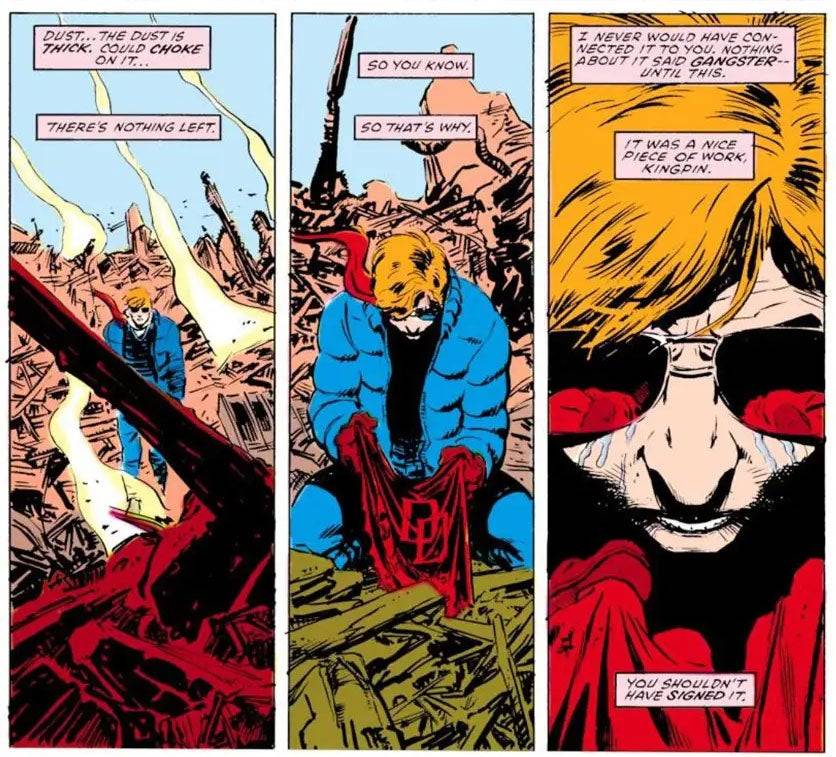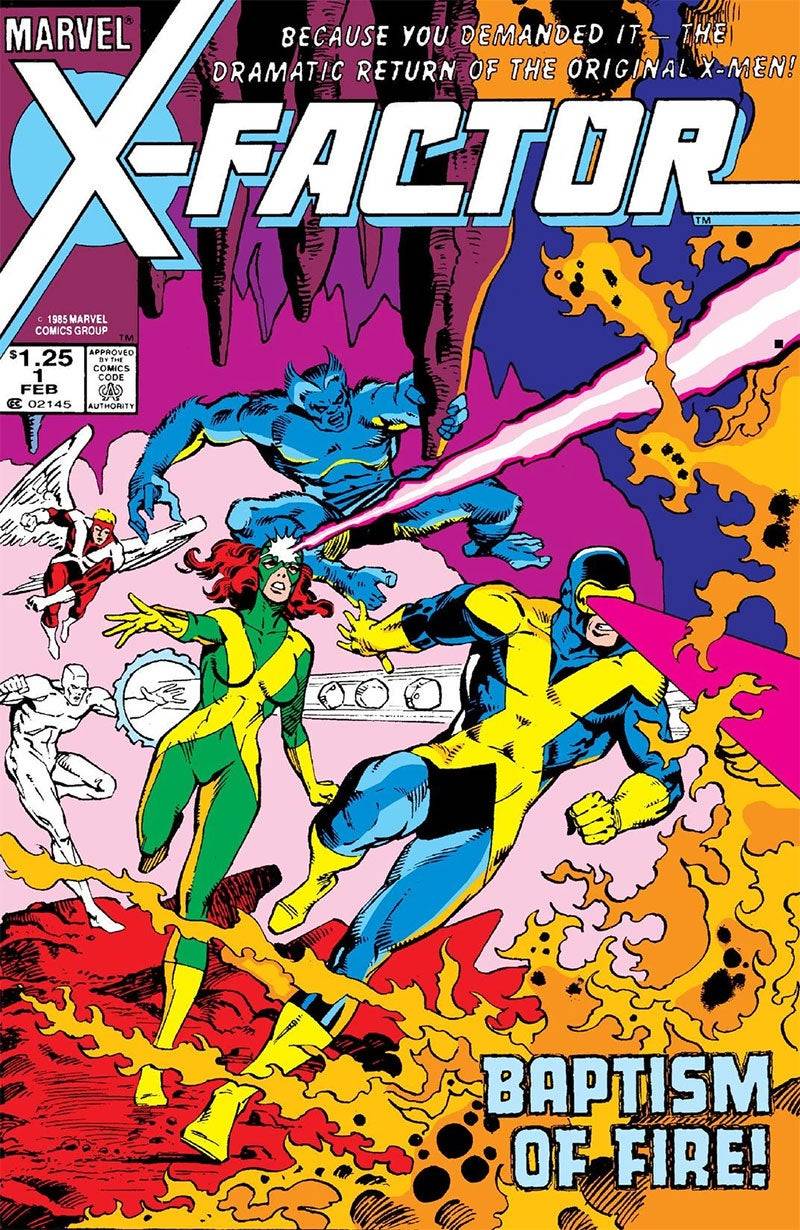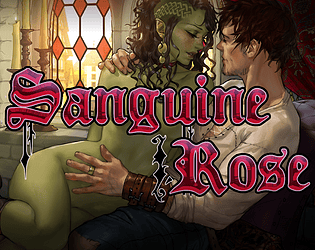The mid-1980s were a golden period for Marvel Comics, both creatively and financially. After overcoming the financial challenges of the late 1970s, bolstered by the success of Star Wars, Marvel was poised to revolutionize the comic book industry with the launch of Secret Wars in 1984. This event had profound effects on the Marvel Universe and the wider comic industry, steering Marvel's heroes and villains into new and exciting directions for years to follow.
This era was also marked by other landmark stories such as Frank Miller's Born Again arc in Daredevil, the return of Jean Grey in X-Factor, and Walt Simonson's Surtur Saga in Thor, among others. In this installment, Part 8 of our series, we delve into these pivotal stories and more from this transformative period. Join us as we explore the essential issues of Marvel from this time!
More Essential Marvel
1961-1963 - The Birth of a Universe
1964-1965 - The Sentinels Are Born and Cap Dethaws
1966-1969 - How Galactus Changed Marvel Forever
1970-1973 - The Night Gwen Stacy Died
1974-1976 - The Punisher Begins His War on Crime
1977-1979 - Star Wars Saves Marvel From Bankruptcy
1980-1982 - Did the Dark Phoenix Saga Usher in the Greatest Decade for Marvel?
Frank Miller's Born Again and Walt Simonson's Surtur Saga
For truly acclaimed storylines from this era, one must look no further than Born Again, Frank Miller's triumphant return to writing Daredevil, this time with David Mazzuchelli on art duties. This arc, spanning Daredevil #227-233, is often considered the definitive Daredevil story. It begins with Karen Page, in the throes of addiction, selling Daredevil's secret identity for heroin, which ultimately falls into the hands of the Kingpin. Using this information, Kingpin systematically dismantles Matt Murdock's life, leaving him homeless and jobless. At his lowest point, Matt is rescued by his mother, a nun named Maggie.
Matt's painstaking journey back to becoming Daredevil, coupled with Kingpin's descent into fanaticism, crafts a compelling narrative that has been lauded as a masterwork. This storyline was adapted into the third season of Netflix's Daredevil and will inspire the Disney+ revival series Daredevil: Born Again.

Another monumental saga from this period is Walt Simonson's Surtur Saga, which he began writing and illustrating with Thor #337 in 1983, introducing the worthy alien Beta Ray Bill. Simonson's run restored Thor's narrative to its mythic roots, culminating in the year-long Surtur Saga from #340-353. In this epic tale, the fire demon Surtur, ruler of Muspelheim, aims to ignite Ragnarok using the Twilight Sword. He enlists Malekith the Accursed to delay Thor, allowing time to forge the sword. The saga concludes with a grand battle featuring Thor, Loki, and Odin united against Surtur. Elements of this saga influenced the plots of Thor: The Dark World and Thor: Ragnarok.
Secret Wars Changes Comics Forever
In Part 4 of this series, we explored how the 1973 Avengers/Defenders War foreshadowed the event crossovers that would later dominate Marvel and DC's publishing strategies. A decade later, this trend fully emerged with Secret Wars in 1984, a 12-issue miniseries crafted by then Editor-in-Chief Jim Shooter, with art by Mike Zeck and Bob Layton. This series was part of a marketing partnership with Mattel, aiming to promote a new toy line through an in-universe story. The premise is straightforward: the cosmic entity known as the Beyonder transports a selection of Marvel heroes and villains to Battleworld to determine the supremacy of good versus evil. The series is filled with large-scale battles and setups for future plotlines, though some character developments, like the X-Men's actions and Magneto's relationship with the Wasp, were criticized for inconsistency with their ongoing narratives.

Secret Wars is a complex legacy. While it became popular due to its expansive cast and significant impact on the Marvel Universe, it often lacked deep narrative substance. Shooter's portrayal of Doctor Doom is a highlight, but his handling of other characters sometimes clashed with their established arcs. The 2015 reboot by Jonathan Hickman and Esad Ribić offered a more cohesive take, yet the original's influence on the comic industry cannot be overstated. Its success spawned Secret Wars II and, alongside DC's Crisis on Infinite Earths, solidified the event-driven model in comics.
Spider-Man’s Symbiote Suit and Other Iconic Spidey Stories
Following the foundational work of Stan Lee and Gerry Conway, Roger Stern revitalized Amazing Spider-Man starting with issue #224, bringing the series back to its revered status. His most notable contribution was introducing the Hobgoblin in Amazing #238, a formidable new adversary for Spider-Man. Although Stern's original Hobgoblin saga was cut short by editorial interference, he returned to resolve the villain's identity in the 1997 miniseries Spider-Man: Hobgoblin Lives.
Right after Stern's departure, Amazing Spider-Man #252 introduced Spider-Man's black symbiote costume, which originated on Battleworld as revealed in Secret Wars #8. This costume initiated a major storyline that eventually introduced one of Spider-Man's most iconic foes. The black suit has been adapted across various media, including Sam Raimi's Spider-Man 3, multiple animated series, and Insomniac's Spider-Man 2. Another significant storyline from this period is The Death of Jean DeWolff in Spectacular Spider-Man #107-110, penned by Peter David and illustrated by Rich Buckler. This dark tale sees Spider-Man confronting the Sin-Eater, who killed his ally Jean DeWolff, and clashing with Daredevil over justice.

Jean Grey Returns, the Rise of Apocalypse, and Other Mutant Landmarks
The X-Men also had significant developments during this time. Vision and the Scarlet Witch #4 confirmed Magneto as the father of Quicksilver and Scarlet Witch, a revelation that stood for decades until a 2015 retcon. X-Men #171 saw Rogue switch sides from the Brotherhood of Evil Mutants to the X-Men, cementing her as a beloved hero. Similarly, X-Men #200 depicted Magneto's trial and subsequent appointment as head of Xavier's School for the Gifted, marking his transition to a more heroic role.
The most pivotal events for the mutants were Jean Grey's resurrection and the introduction of Apocalypse. After the Dark Phoenix Saga, Jean Grey was brought back to life in a storyline spanning Avengers #263 and Fantastic Four #286. She then reunited with the original X-Men to form X-Factor, where in issues #5-6, Apocalypse, an ancient mutant empowered by Celestial technology, was introduced. Apocalypse quickly became a central antagonist in the X-Men universe, featured in various adaptations including the 2016 film X-Men: Apocalypse.

















